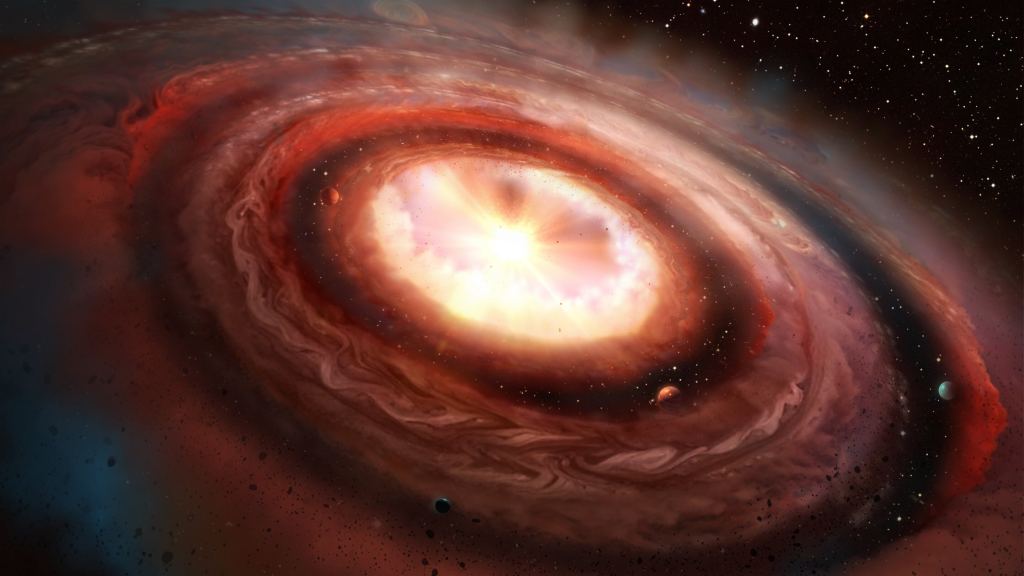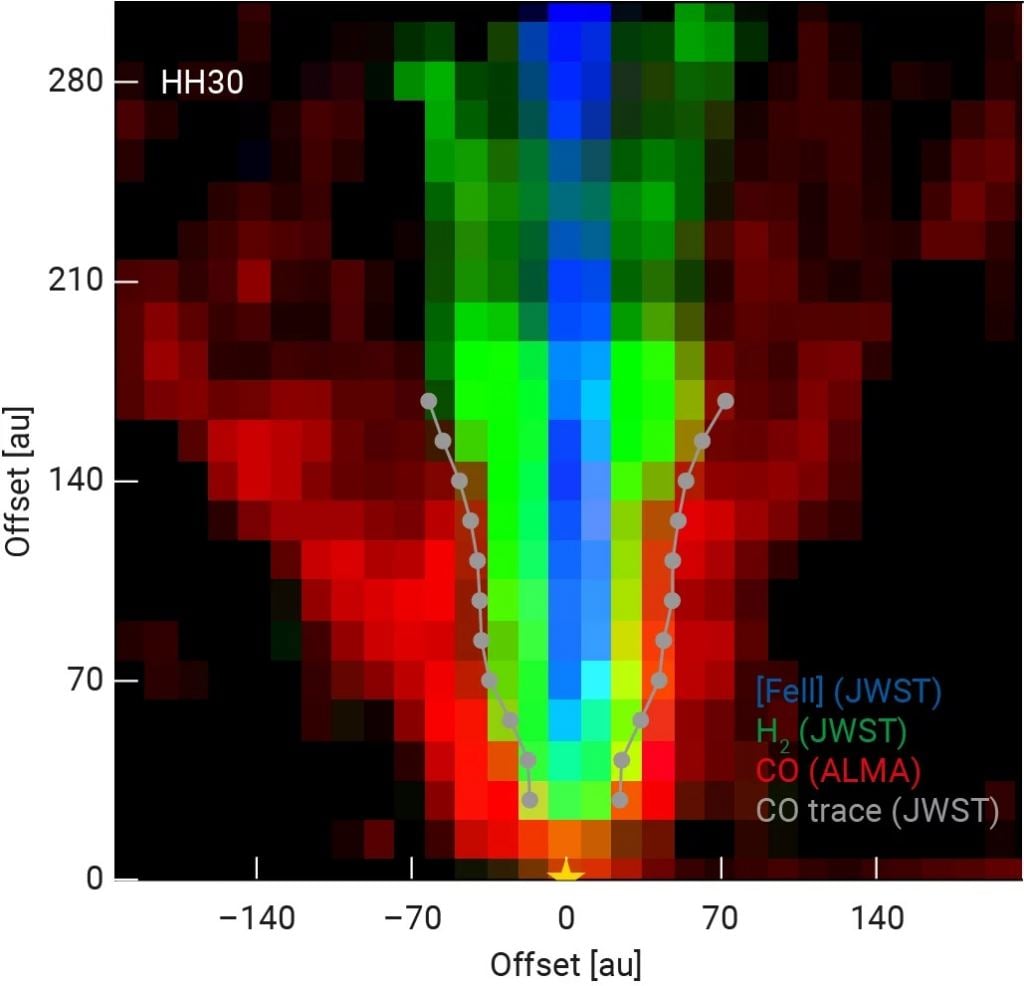Every second in the Universe, more than 3,000 new stars form as clouds of dust and gas undergo gravitational collapse. Afterward, the remaining dust and gas settle into a swirling disk that feeds the star's growth and eventually accretes to form planets - otherwise known as a protoplanetary disk. While this model, known as the Nebular Hypothesis, is the most widely accepted theory, the exact processes that give rise to stars and planetary systems are not yet fully understood. Shedding light on these processes is one of the many objectives of the *James Webb Space Telescope* (JWST).
In a recent study, an international team of astronomers led by University of Arizona researchers and supported by scientists from the Max Planck Institute of Astronomy (MPIA) used the JWST's advanced infrared optics to examine protoplanetary disks around new stars. These observations provided the most detailed insights into the gas flows that sculpt and shape protoplanetary disks over time. They also confirm what scientists have theorized for a long time and offer clues about what our Solar System looked like roughly 4.6 billion years ago.
The research was led by Ilaria Pascucci, a Professor of astrophysics and planetary science from the Lunar and Planetary Laboratory (LPL) at The University of Arizona. She was joined by researchers from the Space Telescope Science Institute (STScI), the Observatoire de Paris, the National Optical-Infrared Astronomy Research Laboratory (NOIRLab), the Carl Sagan Center at the SETI Institute, the Max-Planck-Institute for Astronomy, and multiple universities. The paper that describes their findings recently appeared in Nature Astronomy.
In order for young stars to grow, they must draw in gas from the protoplanetary disk surrounding them. For that to happen, the gas must lose angular momentum (inertia); otherwise, it would consistently orbit the star and never accrete onto it. However, the mechanism that allows this to happen has remained the subject of debate among astronomers. In recent years, magnetically driven disk winds have emerged as a possible mechanism. Primarily powered by magnetic fields, these "winds" funnel streams of gas away from the planet-forming disk into space at dozens of kilometers per second.
This causes it to lose angular momentum, allowing the leftover gas to fall inward toward the star. For their study, the researchers selected four protoplanetary disk systems that appear edge-on when viewed from Earth. Using Webb's Near Infrared Spectrograph (NIRSpec), the team could trace various wind layers by tuning the instrument to detect distinct atoms and molecules in certain transition states. The team also obtained spatially resolved spectral information across the entire field of view using the spectrograph's Integral Field Unit (IFU).
This allowed the team to trace the disk winds in unprecedented detail and revealed an intricate, three-dimensional layered structure: a central jet nested inside a cone-shaped envelope of winds at increasing distances. The team also noted a pronounced central hole inside the cones in all four protoplanetary disks. According to Pascucci, one of the most important processes at work is how the star accretes matter from its surrounding disk:
"How a star accretes mass has a big influence on how the surrounding disk evolves over time, including the way planets form later on. The specific ways in which this happens have not been understood, but we think that winds driven by magnetic fields across most of the disk surface could play a very important role."
However, other processes are also responsible for shaping protoplanetary disks. These include "X-wind," where the star's magnetic field pushes material outward at the inner edge of the disk. There are also "thermal winds," which blow at much slower velocities and are caused by intense starlight eroding its outer edge. The high sensitivity and resolution of the JWST were ideally suited to distinguish between the magnetic field-driven wind, the X-wind, and the thermal wind. These observations revealed a nested structure of the various wind components that had never been seen before.
A crucial distinction between the magnetically driven and the X-winds is how they are located farther out and cover broader regions. These winds cover regions that correspond to the inner rocky planets of our solar system, roughly between Earth and Mars. They also extend farther above the disk than thermal winds, reaching hundreds of times the distance between Earth and the Sun. While astronomers previously found observational evidence of these winds based on interferometric observations at radio wavelengths, they could not image the full disk in detail to determine the winds' morphology.
In contrast, the new JWST observations revealed a nested structure and morphology that matched what astronomers anticipated for magnetically driven disk wind. Looking ahead, Pascucci's and her team hope to expand these observations to more protoplanetary disks to see how common the observed disk wind structures are and how they evolve.
"Our observations strongly suggest that we have obtained the first detailed images of the winds that can remove angular momentum and solve the longstanding problem of how stars and planetary systems form," she said. "We believe they could be common, but with four objects, it's a bit difficult to say. We want to get a larger sample with JWST and then also see if we can detect changes in these winds as stars assemble and planets form."
Further Reading: MPIA*, Nature Astronomy*
 Universe Today
Universe Today


